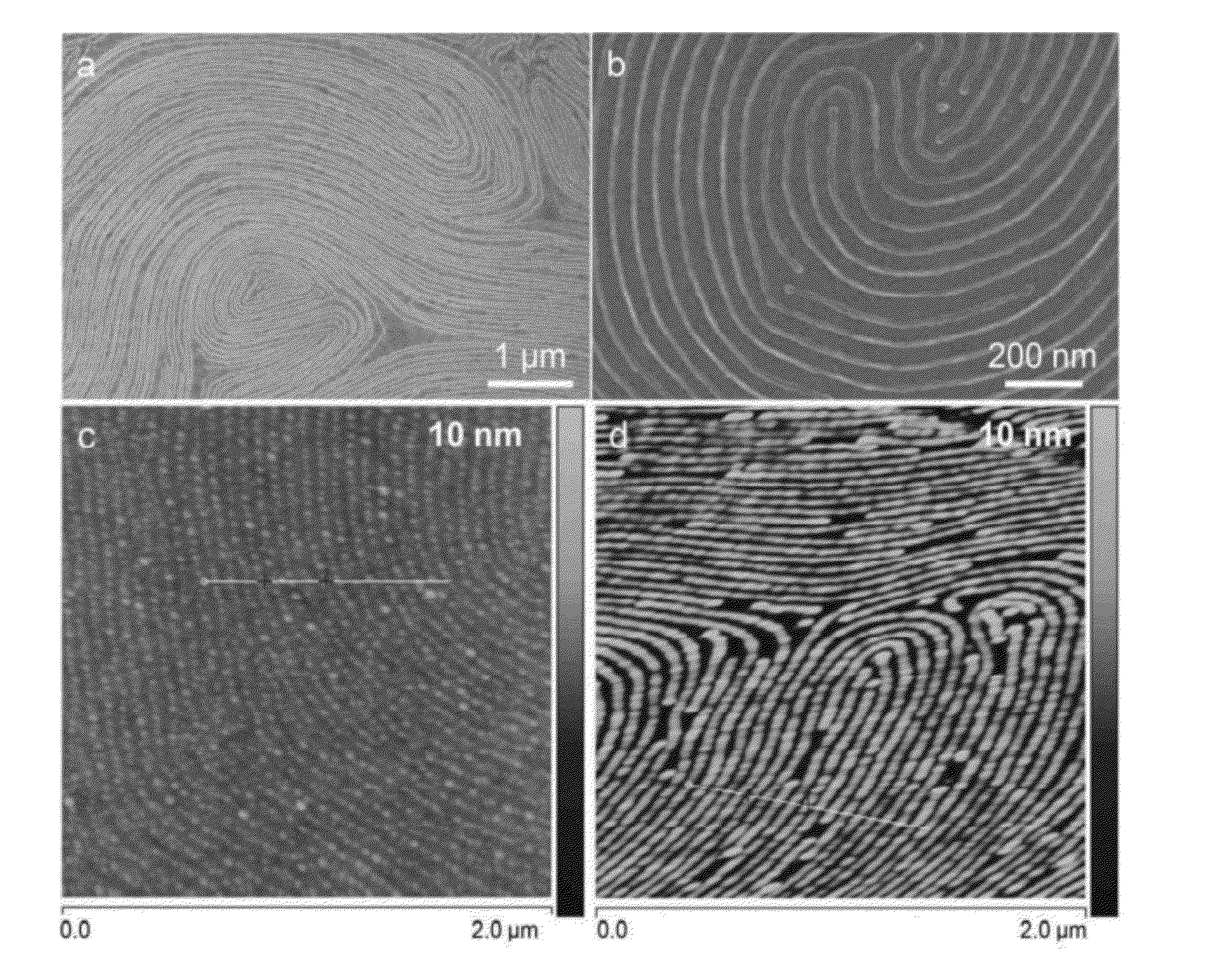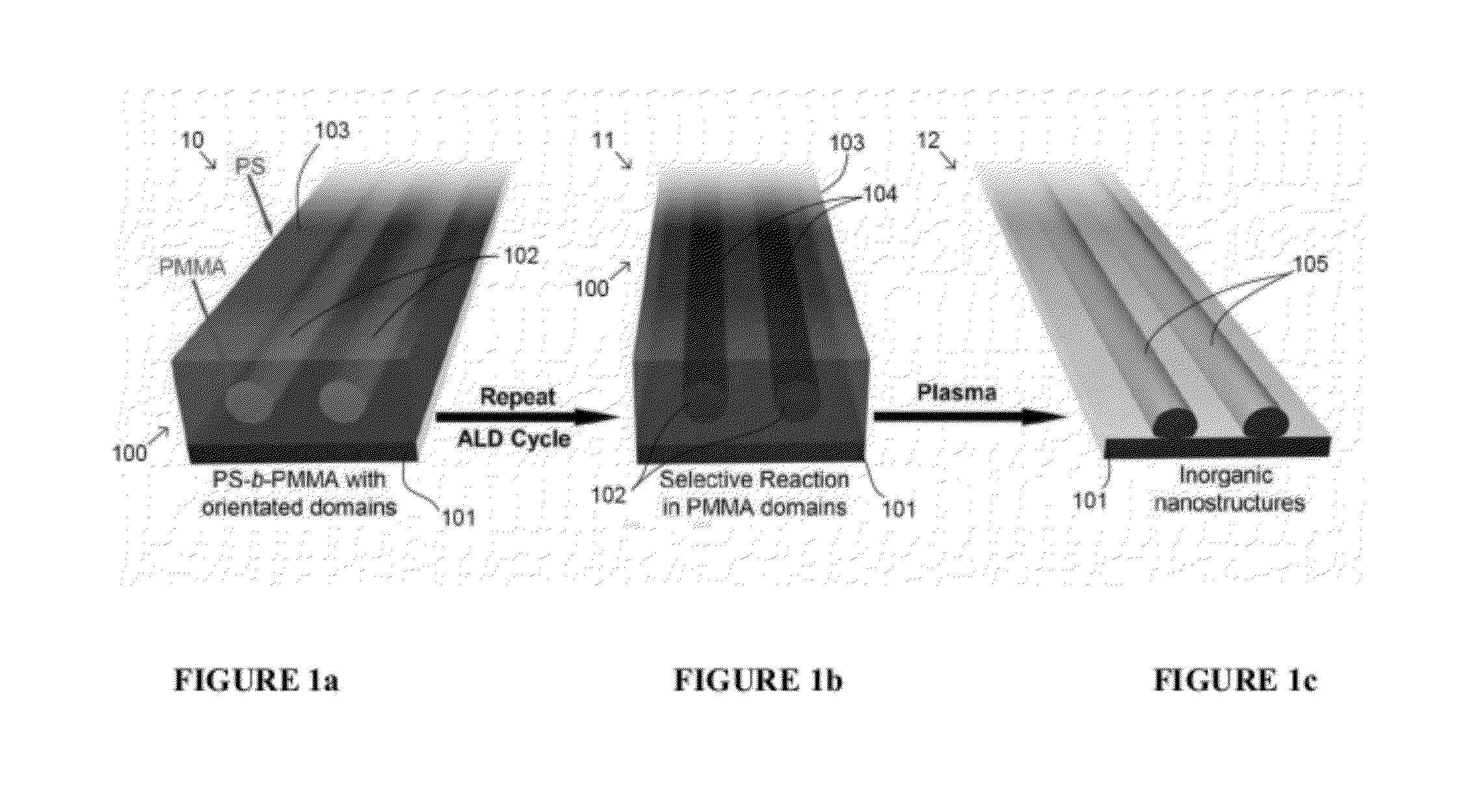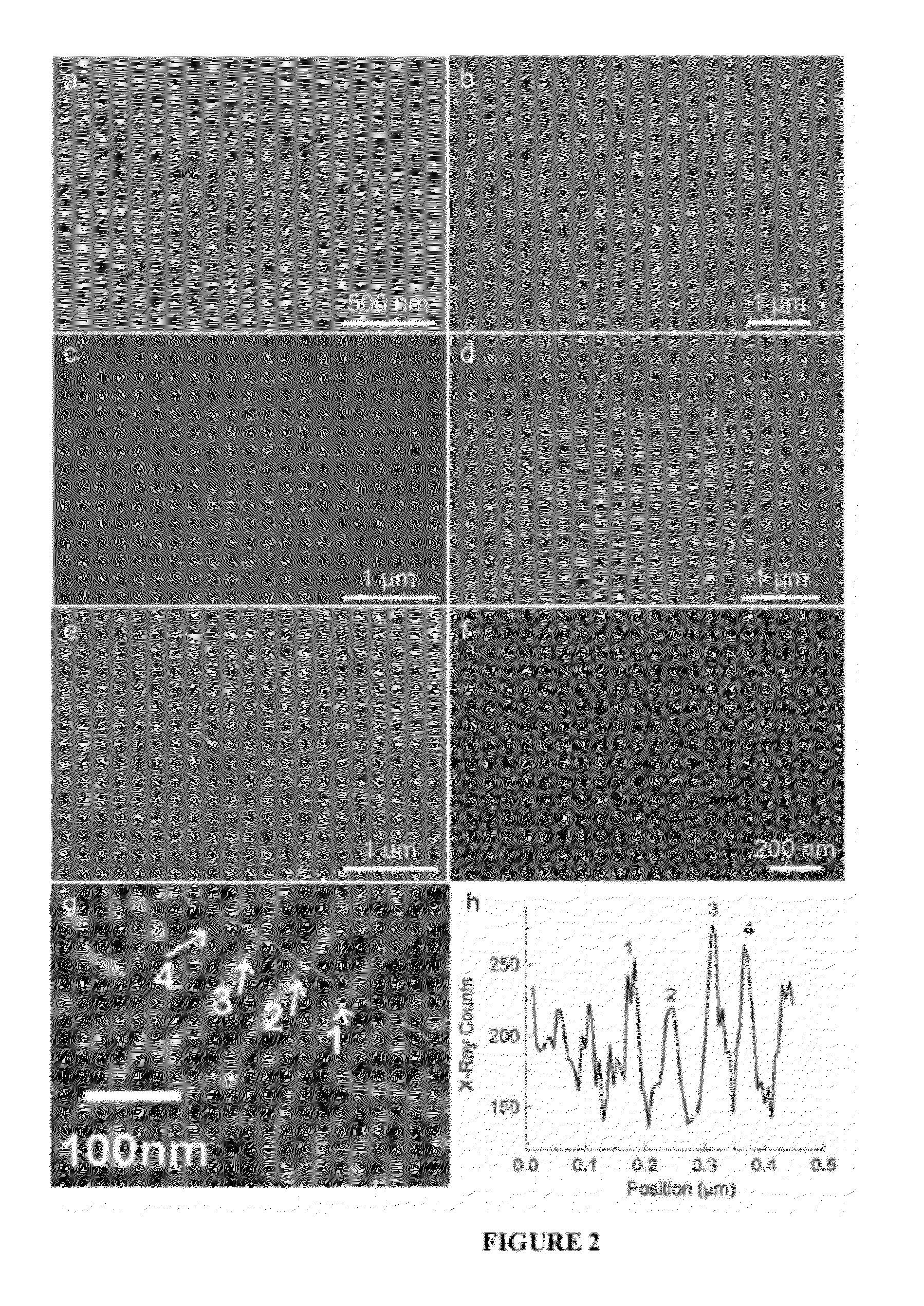Ordered Nanoscale Domains by Infiltration of Block Copolymers
- Summary
- Abstract
- Description
- Claims
- Application Information
AI Technical Summary
Benefits of technology
Problems solved by technology
Method used
Image
Examples
examples
[0038]Polystyrene-block-poly(methyl methacrylate) (PS-b-PMMA, MW=50,500 / 20,900) (Polymer Source, Inc.) was purified through Soxhlet extraction to remove excess PS homopolymer. BCP solutions were prepared in toluene (Fisher, 99.5%) with a concentration of 13 mg / mL. The PS485-b-PMMA201 block copolymer scaffold features were prepared by spin coating from a toluene solution onto cleaned silicon scaffolds with native SiO2. After deposition, PS-b-PMMA features were annealed at 250° C. for two hours in a tube furnace under a flowing Ar atmosphere, then cooled to room temperature to obtain self-assembled patterns. The in-plane PMMA cylinders were 30±3 nm in diameter, and the center-to-center lateral distance was 60±5 nm. These dimensions can be varied by adjusting the molecular weight of the constituent polymer blocks.
[0039]The Al2O3 SIS process was performed using the SIS timing sequence: 60 / 300 / 60 / 300 seconds, where the first times represent first metal precursor trimethyl aluminum (Al(CH...
PUM
| Property | Measurement | Unit |
|---|---|---|
| Size | aaaaa | aaaaa |
| Electrical conductor | aaaaa | aaaaa |
| Wavelength | aaaaa | aaaaa |
Abstract
Description
Claims
Application Information
 Login to View More
Login to View More - R&D
- Intellectual Property
- Life Sciences
- Materials
- Tech Scout
- Unparalleled Data Quality
- Higher Quality Content
- 60% Fewer Hallucinations
Browse by: Latest US Patents, China's latest patents, Technical Efficacy Thesaurus, Application Domain, Technology Topic, Popular Technical Reports.
© 2025 PatSnap. All rights reserved.Legal|Privacy policy|Modern Slavery Act Transparency Statement|Sitemap|About US| Contact US: help@patsnap.com



